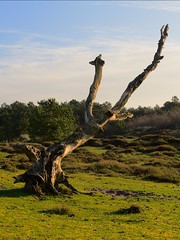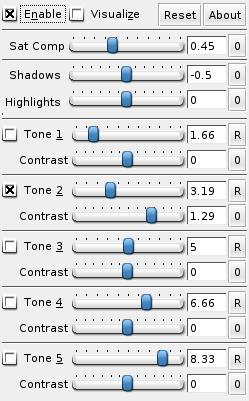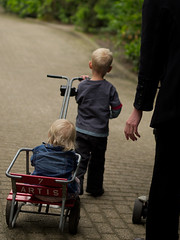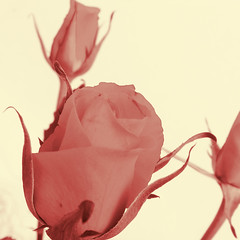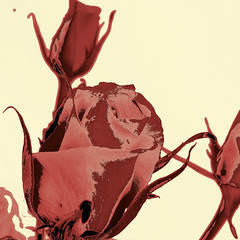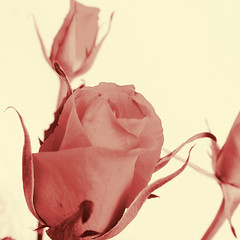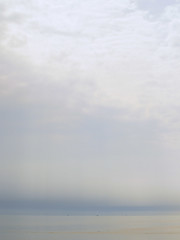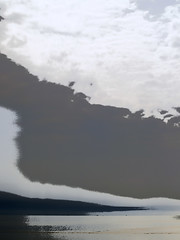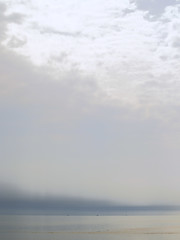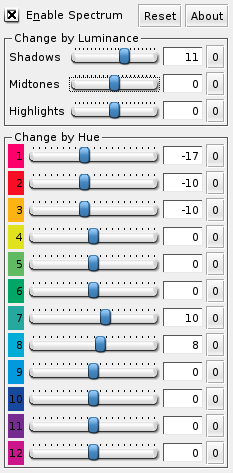Color Popper
Introduction
Color Popper is an easy to use Bibble plugin which allows you to
change the color levels in an image without altering the exposure
and contrast. It works by changing the contrast of the a and the
b channels in CIELAB color space.
Documentation
Changing the R / G slider will alter the reds and the greens.
Altering the B / Y slider will do the same for the blue's and
the yellows.
It is also possible to remove color instead of popping them
by setting the sliders all the way back to -100. This will
result in a black and white picture.
Download
Download: Color Popper 0.9 (For windows, Linux and Mac)
Contact
mmzeeman@xs4all.nl
Contrast Control
Introduction
Constrast Control is a plugin for the raw workflow tool
Bibble.
History
In my search for a good smooth spline formula for use in the spectrum
plugin I stumbled on the research
work
of Mark Grundland and others.
I was curious how one of the ideas would work in practive, so I implemented
the Contrast Control plugin, which is based on the "Interactive Contrast
Enhancement by Histogram Warping" technique. The plugin works really well.
At that point I decided to make
I'm surprised how easy it is to alter the appearance of an image. It can be
used to lighten and soften the skin tone in portraits. Give the clouds in the
sky a little extra. Open up shadows, and more.
Documentation
If you have a good example of what can be done with contrast control, don't
hesitate to contact me.
Example 1
This example shows the effect of saturation compensation. The original image was shot for the highlights.
By setting just the shadow slider to 1.83, and the highlights to -0.81, the image is improved without
blowing the hightlights. The colors are now a bit washed out. Enabeling saturation compensation
will compensate this. It will compensate saturation changes caused by the modification of the
lightness in the image.
Example 2
Another Example
This set of pictures shows the Wadden Sea at low tide.
(Follow link if you want to see some stunning Google Earth
satellite images of the area. The area looks really special from above.)
The emptiness of the area can really grab me from time to time. Especially
when rain-showers in the distance color the sky in such a way that it blends
the sky and the sea. As you see its a very low contrast shot. When I
got home I almost threw the image away as I was a bit disappointed
about it (As a beginner I still have a lot to learn.).
But, when I started working on the contrast control plugin I re-discovered it, and
used it as a test-case.
The clouds at the top, and the muddy area in front can really use some
extra contrast. When visualization is turned on you can easily locate
the tone for which you want to change the contrast. In this case I enabled two
contrast-points. One to take care of the clouds, and one for the middle gray
muddy area in front. Moving the tone slider back and forth will make it easy
to locate the tone which you want to change the contrast off.
If you have located the tone, you can disable visualization, and use the
contrast slider to alter the contrast around that tone. Note that the tone
itself will not become lighter or darker. You will just change the contrast
around the selected contrast point. If you increase the contrast it will bring
out more details so it stands out more. Lowering contrast will hide details.
(also nice for skin tones in portraits).
Download
Download:
Contrast Control 1.1 (For Windows, Linux and Mac)
Changes:
Added saturation compensation slider. This feature compensates changes in
saturation caused by changes in lightness. It will keep the original
saturation level. This really helps for big changes in shadow areas.
Previous Versions:
Contrast Control 1.0 (For windows, Linux and Mac)
Contrast Control 0.8 (For windows, Linux and Mac)
Legal
Contrast Control is provided free of charge. Contrast Control is copyright
2007 by Maas-Maarten Zeeman, all rights reserved.
Contact
mmzeeman@xs4all.nl
References
Interactive Contrast Enhancement by Histogram Warping
Mark Grundland and Neil A. Dodgson
International Conference on Computer Vision and Graphics (Warsaw, Poland, 22-24 September 2004)
Computational Imaging and Vision, vol. 32, pp. 832-838, Springer. ISBN 1-4020-4178-0.
Digital photo's allow for more easy manipulation of e.g tonality
and color balance. With the help of Bibble it is easy to make the
picture darker or lighter. Alter the black,- and whitepoint of
an image, change the tonality with a curve. Usually these digital
image manipulations are direct translations of already existing
darkroom techniques.
With digital photo's it is possible to extend the set of techniques
furter. Digital image manipulation makes it possible to more easily
manipulate colors than what was possible with traditional chemical
based color photography.
Traditional systems for color photography hover lacked more control
over the color dimensions of an image. Yes, it is possible to change
to color balance, but it is hard to get full control over the color
appearance in an image. The reason for this is that it is almost
impossible to do with traditional chemicals in a darkroom.
Digital photo's can be thought of as large number of different colors.
These colors can be placed into a so called 3D "Uniform Color Space"
called CIE L*a*b. This color space has white positioned at the top,
and black at the bottom. On this straight line from top to bottom you
can find all grays. The points here do not have a color. Around this
line lie all colors. The more further away a point is from the gray
axis, the more colorfull it looks.
The distance from the white - black axis is called, the "Chroma"
dimension. With the Spectrum plugin it is possible to manipulate
this feature. The Spectrum plugin has 12 sliders. Each slider
controls how much the chroma component of a color falling into a
section of the color space will be altered. This is also called
a chroma curve. This allows one to e.g. make yellow parts more
yellow without touching other colors, or the tonality of the image.
Examples
Watch this space. I'm working on some examples.
Download
Download: Spectrum 1.0 (For windows, Linux and Mac)
Donate
If you like the Spectrum plugin, or if it benefitted you in some way, please consider making a small contribution. It
will be highly appreciated.
Legal
Spectrum is provided free of charge. Spectrum is copyright
2007 by Maas-Maarten Zeeman, all rights reserved.
Contact
mmzeeman@xs4all.nl
Memo
Memo is a plugin which allows you to attach notes to photo's. This
can be handy if you work on an image, and want to remember what
point was used for "Click White Balance", or what line in the image
was used to staighten the image.
Memo doesn't do any image processing, it just keeps memo's.
Legal
Memo is provided free of charge. Memo is copyright
2007 by Maas-Maarten Zeeman, all rights reserved.
Download
Download: Memo 1.1 (For windows, Linux and Mac)
Previous Version:
Memo 1.0 (For windows, Linux and Mac)
Contact
mmzeeman@xs4all.nl
Photoshop Curve -> Bibble Curve Converter
This small python script can convert a saved Photoshop curve into a Bibble
curve. After conversion you can load the Photoshop curve into Bibble.
Usage: acv2bch.py <ps-curve-1.acv> <ps-curve-2.acv> ...
You will find files named ps-curve-1.bch, ps-curve-2.acv
in the same directory.
With this script I converted the curves found in the article
Curves and films by Petteri Sulonen. You might want to
look at some of his other articles too.
The Bibble versions of the curves written about in the article can be
downloaded here.
Please note that these curves are licensed by Petteri Sulonen under the
Creative Commons Attribution License.
Currently I have just the python script for download. If there are enough
requests I can make a windows executable available.
Download: acv2bch.py
References
The Adobe Photoshop file format description was found
here.
Bibble Plugins Developed by Others
Sean Puckett has created a lot of very useful
Bibble plugins.
Alex van Boxel created LumaLab (sorry the link is dead), a Black and
White plug-in. Unfortunately it is not compatible with the latest Bibble
releases.


